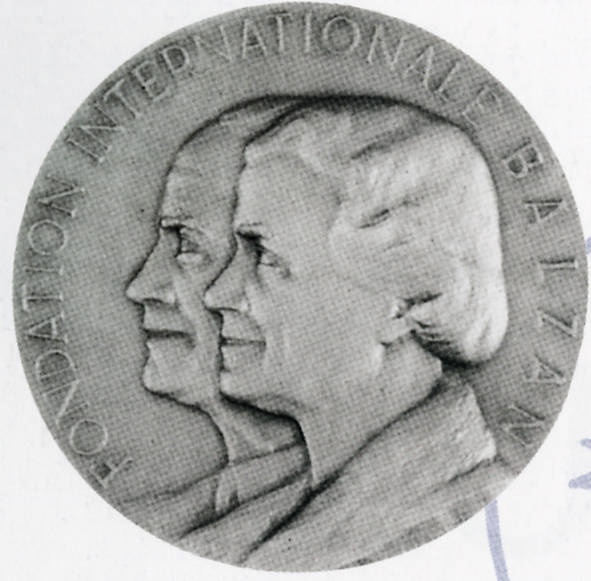This Year’s Balzan prize.The Italian-Swiss Answer to the Nobel Prize
How long will it take before the sea level rises so that it creates new lakes in some parts of the planet and dries up others that we have grown up with? Do we inherit habits or characteristics that our parents have despite the fact that they are not part of our DNA sequence? What is the relationship between free will and legal interpretation? These questions and others of this abstract and significant nature are just a few of the questions that winners of this year’s Balzan prize are able to predict or explain how one would arrive at a prediction.
What is the Balzan prize you might ask? The Balzan prize in the sciences and the humanities is the Italian-Swiss answer to the Nobel Prize. Like the Nobel, it recognizes supreme achievements in a host of different sectors. The nature of the fields for the 2012 prizes was that each winner worked in a interdisciplinary way, much the opposite of the push to specialization or better, marrying specializations in a number of fields. One example is Kurt Lambeck who won the prize for his work in the Earth Sciences.
The International Balzan Foundation awards four prizes, 750,000 Swiss Francs or $800,000 dollars each, a figure that places the Balzan Prize amongst the biggest prize funds in the worlds of Science and Culture. Since 2001, the winners are each required to allocate half of their prize money to funding research projects carried our preferably by young scholars or scientists in their respective fields. In the last twelve years, 48 research projects in a wide array of disciplines have benefitted from an input of 23 million francs and launched the careers of numerous young researchers.
The awards ceremony took place on November 14 in Rome at the Quirinale, the official residence of the Italian President. On November 15, the prizewinners held an interdisciplinary forum with members of the Balzan General Prize Committee and Members of the Academia Nazionale dei Lincei.
According to established tradition reflecting the Italic-Swiss nature of the International Balzan Foundation, the Award Ceremony takes place in alternate years in Rome, in the presence of the President of the Italian Republic, and in Bern, in the presence of a Representative of the Federal Council of the Swiss Confederation, usually the Head of the Federal Department of Home Affairs.
These lofty conversations and lives dedicated to the study of the sciences and the humanities are quite different one from the other – be it by country or by field - yet all are touched by the life of one man – Eugenio Balzan. This year’s winners included a German, a Dutchman, an Englishman and an American who work at some of the world’s greatest universities: the Australian National University, Cambridge, Oxford, and New York University.
Who was Balzan?
Eugenio Balzan, who died in 1953, was a journalist who spent his career at Corriere della Sera in Milan. He started working for the paper in 1897. From his humble beginnings at as an editorial assistant, he rose to become the managing director of the paper’s publishing house and finally became a partner with a small stake in the company that ran Corriere della Sera.
Balzan was fiercely independent and believed in freedom of speech and thought. For this reason, he chose to leave Italy in 1933 because of the attitude of the Fascist regime to Corriere’s independent journalistic stance. He moved to Switzerland, first Zurich and then Lugano, the Italian-speaking portion of Switzerland. Thanks to a series of good investments, this son of an impoverished family was able to leave a sizeable estate to his daughter Angela Lina upon his untimely death. She established the foundation in 1957 to honor his memory and his lifelong involvement in philanthropy.
At this year’s ceremony, we heard how the funds will enable one Professor who has been ‘forcibly retired” because of his age (70 years old) to continue his groundbreaking work and to guide students and how another intended to explore the interconnectedness of music traditions throughout history.
Some of the young researchers whose projects have been funded by the Balzan prize monies spoke during the four day festivities in Rome and noted the results of their research, the influence that the Balzan monies had had on their careers and how an extra source of funding allowed them to continue on a path of inquiry that they wouldn’t have been able to follow.
This relatively unique situation in terms of funding has allowed the prizewinners to explore areas and make discoveries they wouldn’t otherwise have been able to access. Lambeck mentioned the timing of the funding and how fortuitous it is in his career. Other prizewinners have said the same thing and this has become a signature of the foundation.
Another aspect of the foundation is that its cross border nature has expanded from being two different sides of the foundation in two countries to collaboration between the National science academies of both countries as well as considerable collaboration between the consulates of each country in the United States. Collaboration and interdisciplinary work is the way forward and Balzan is helping to contribute to this methodology.
The 2013 Balzan prizes will be awarded in the following four areas: Medieval History,
Sociology, Quantum Information: Processing and Communication, and Infectious diseases: basic and clinical aspects. The prizes will be announced in September 2013.


































i-Italy
Facebook
Google+
This work may not be reproduced, in whole or in part, without prior written permission.
Questo lavoro non può essere riprodotto, in tutto o in parte, senza permesso scritto.